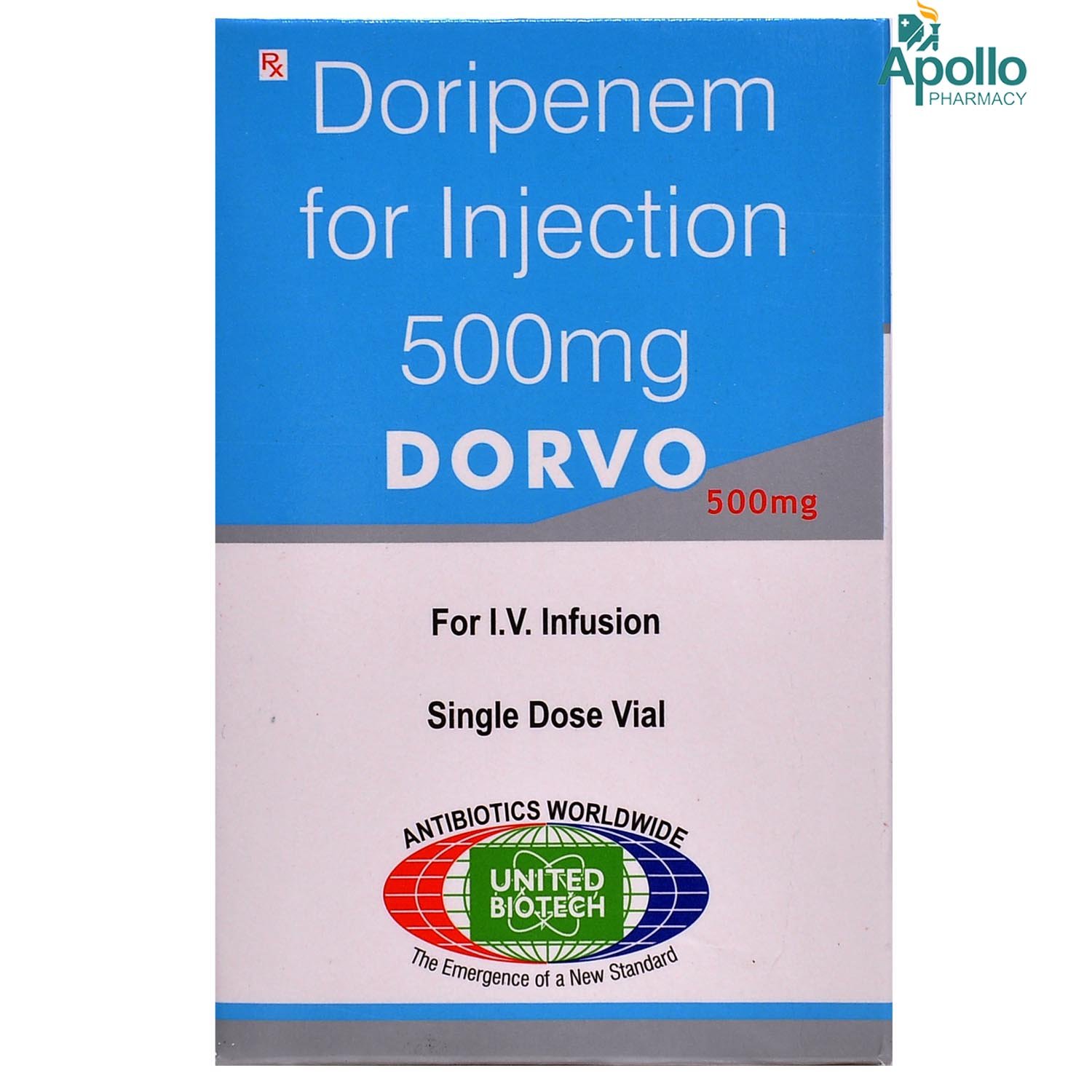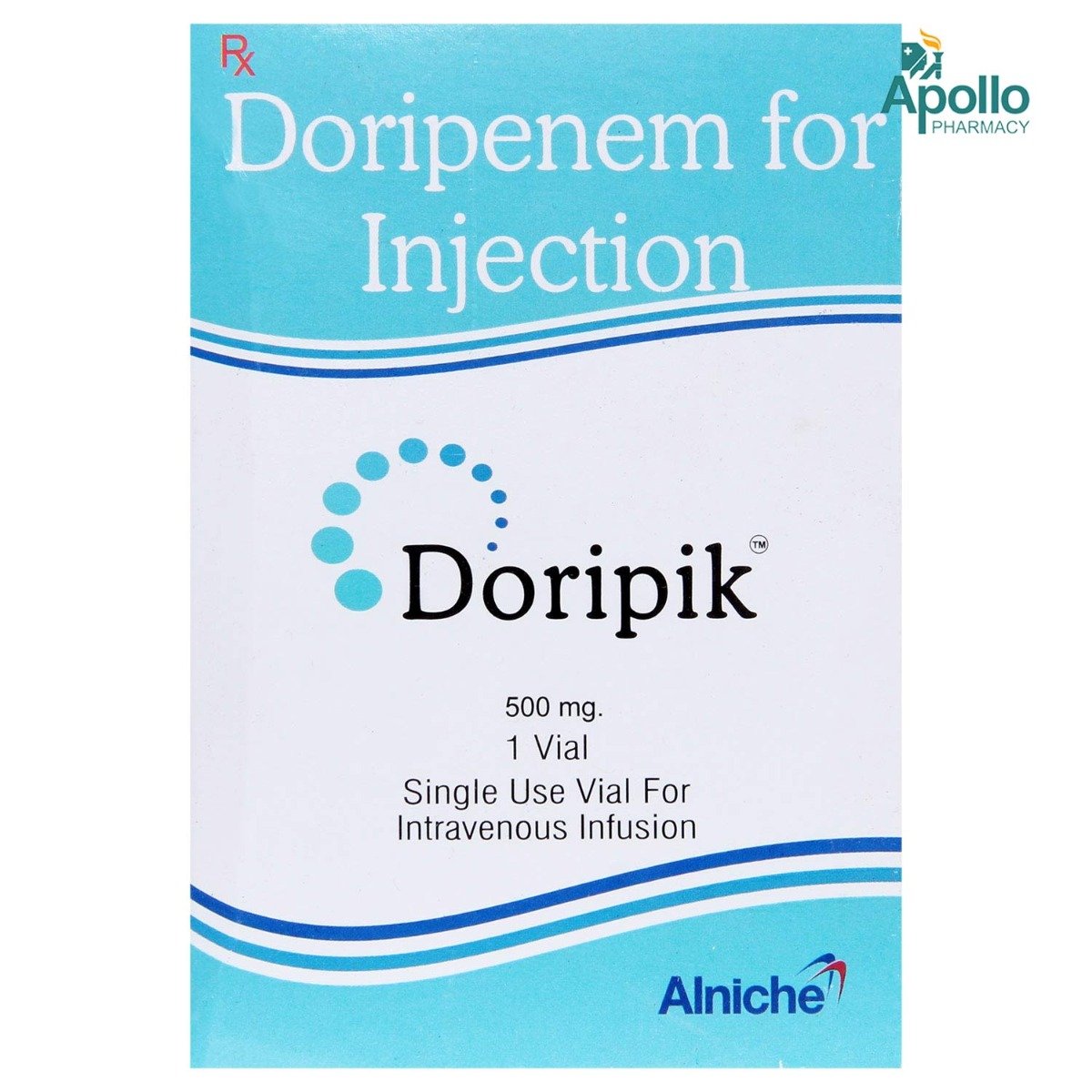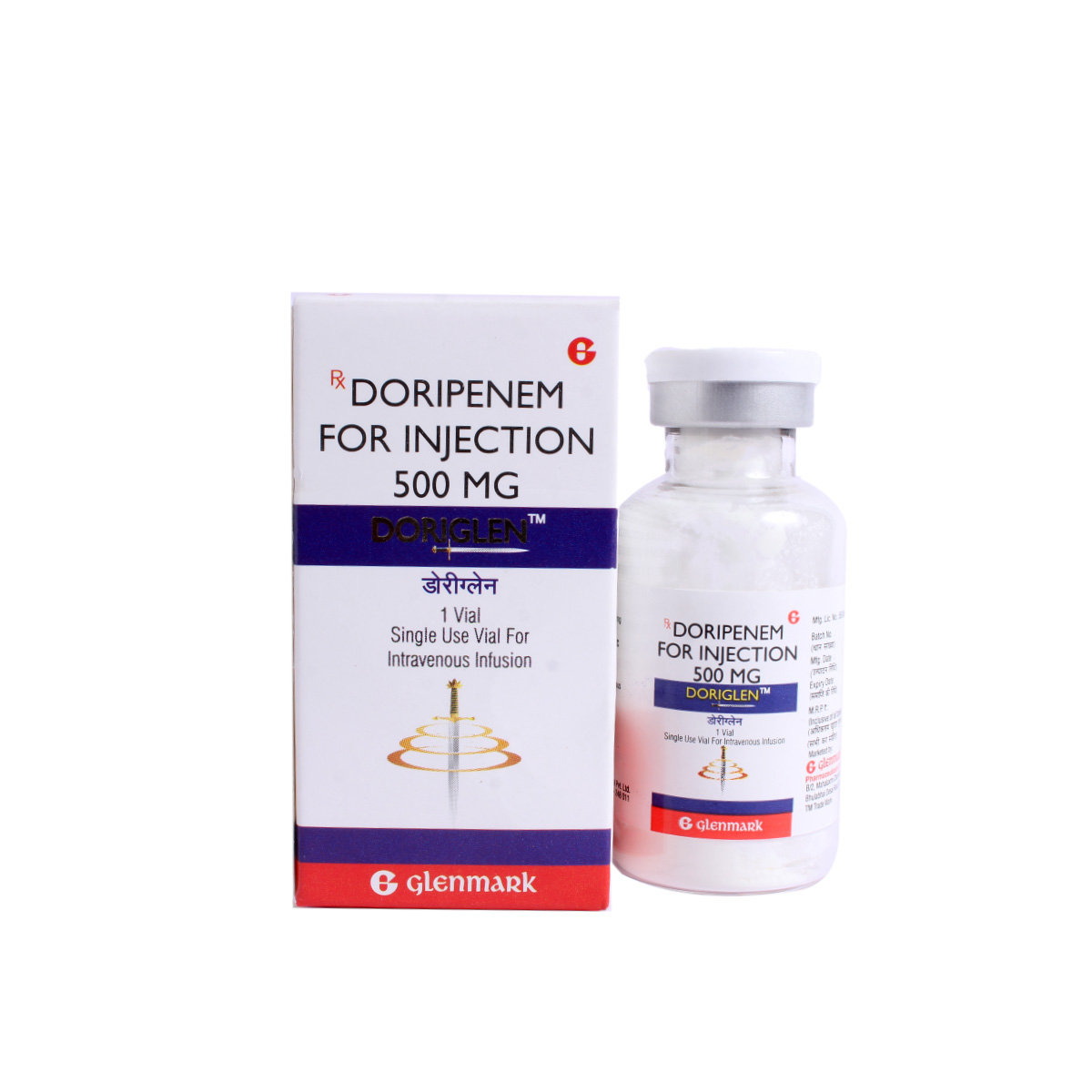Dorific 500mg Injection

MRP ₹1689
(Inclusive of all Taxes)
₹253.3 Cashback (15%)
know your delivery time
Provide Delivery Location
Composition :
Manufacturer/Marketer :
Consume Type :
Expires on or after :
Return Policy :

Secure Payment

Trusted by 8 Crore Indians

Genuine Products
Therapeutic Class
Country of origin
Manufacturer/Marketer address
Author Details
We provide you with authentic, trustworthy and relevant information
Disclaimer
Alcohol
Safe if prescribed
Consuming alcohol with Dorific 500mg Injection is not advisable as it may cause unpleasant side effects.
Pregnancy
Consult your doctor
Please visit your doctor. There are no adequate and well-controlled studies in pregnant women. Your doctor will only provide a prescription if the benefits outweigh the risks.
Breast Feeding
Consult your doctor
Consult your doctor; there has been no significant research on the use of Dorific 500mg Injection in breastfeeding women.
Driving
Safe if prescribed
It is unclear whether Dorific 500mg Injection affects driving abilities, so don't drive or operate machinery if you're having trouble concentrating or reacting.
Liver
Consult your doctor
Limited information was available about using Dorific 500mg Injection in patients with liver disease. Inform your doctor before receiving Dorific 500mg Injection if you have a history of liver diseases/conditions. Your doctor will prescribe only if the benefits outweigh the risks.
Kidney
Consult your doctor
Inform your doctor before receiving Dorific 500mg Injection if you have had a kidney impairment/disorder history. Your doctor may adjust the dose or prescribe a suitable alternative based on your condition.
Children
Safe if prescribed
It is not recommended for use in children below 18 years.
Product Substitutes
About Dorific 500mg Injection
Dorific 500mg Injection belongs to the group of antibiotic medicines called carbapenems. It is indicated in treating bacterial infections such as complicated intra-abdominal infections and complicated urinary tract infections (including pyelonephritis). Bacterial infections are illnesses or conditions caused by bacterial growth or toxins (poisons).
Dorific 500mg Injection contains doripenem. Doripenem is an antibacterial drug. It works by inhibiting bacterial enzymes called penicillin-binding proteins (PBPs) and shows a bactericidal effect. Thus, Dorific 500mg Injection treats bacterial infections.
Dorific 500mg Injection will be administered by a healthcare professional; do not self-administer. Sometimes, Dorific 500mg Injection may cause injection site reactions, headaches, nausea, diarrhoea, rash, and phlebitis (vein inflammation). Most of these side effects do not require medical attention and gradually resolve over time. However, if the side effects persist, consult your doctor.
Inform your doctor if you are allergic to any component in Dorific 500mg Injection. If you are pregnant or breastfeeding, inform your doctor before taking Dorific 500mg Injection. It is not recommended for use in children below 18 as safety and effectiveness have not been established. Keep your doctor up to date on your medical condition and medications to rule out any potential adverse effects or interactions.
Uses of Dorific 500mg Injection
Medicinal Benefits Mweb
Key Benefits
Dorific 500mg Injection contains doripenem. Doripenem is an antibacterial drug. It works by killing bacteria. Thus, Dorific 500mg Injection helps treat bacterial infections. It is indicated in treating bacterial infections such as complicated intra-abdominal infections and complicated urinary tract infections (including pyelonephritis).
Directions for Use
Side Effects of Dorific 500mg Injection
- Redness, pain, or swelling at the injection site
- Headaches
- Nausea
- Diarrhoea
- Rash
- Phlebitis (vein inflammation)
Drug Warnings
Dorific 500mg Injection is contraindicated in patients with known serious hypersensitivity to doripenem, other drugs in the same class, or patients who have demonstrated anaphylactic reactions to beta-lactams. To reduce the development of drug-resistant bacteria and maintain the effectiveness of Dorific 500mg Injection should be used only to treat or prevent infections that are proven or strongly suspected to be caused by bacteria. If symptoms worsen or persist or new symptoms appear, patients should stop using the medicine and consult a doctor. Valproic acid lowers serum valproic acid concentrations. Patients with seizure disorders treated with valproic acid or sodium valproate are at a higher risk of having a seizure.
Drug-Drug Interactions
Drug-Drug Interactions
Login/Sign Up
Co-administration of Divalproex and Dorific 500mg Injection can reduce the blood levels of divalproex sodium and increase the risk of developing seizures.
How to manage the interaction:
Co-administration of Divalproex with Dorific 500mg Injection can possibly result in an interaction, it can be taken when your doctor has advised it. Do not stop using any medications without first talking to your doctor.
Co-administration of sodium valproate with Dorific 500mg Injection can reduce the blood levels of valproic acid.
How to manage the interaction:
Co-administration of Doripenam and sodium valproate can lead to an interaction, it can be taken if advised by your doctor. However, if you experience sudden dizziness, lightheadedness, fainting, shortness of breath, chest pain or tightness, rapid heartbeat, involuntary muscle movements, or memory loss, contact your doctor immediately. Do not discontinue any medications without consulting a doctor.
Drug-Food Interactions
Drug-Food Interactions
Login/Sign Up
Drug-Diseases Interactions
Drug-Diseases Interactions
Login/Sign Up
Drug-Drug Interactions Checker List
- BCG VACCINE
- CHOLERA VACCINE LIVE
- TYPHOID VACCINE LIVE
- VALPROIC ACID
- DIVALPROEX SODIUM
Habit Forming
Diet & Lifestyle Advise
- It would be best to take probiotics after taking the full course of Dorific 500mg Injection to restore some healthy bacteria in the intestine that may have been killed. Taking probiotics after antibiotic treatment can reduce the risk of antibiotic-associated diarrhoea. Certain fermented foods like yoghurt, cheese, sauerkraut and kimchi can help restore the intestine's good bacteria.
- Include more fibre-enriched food in your diet, as it can be easily digested by gut bacteria, which helps stimulate their growth. Thus fibre foods may help restore healthy gut bacteria after taking a course of antibiotics. Whole grains, like whole-grain bread and brown rice, should be included in your diet.
- Avoid taking too many calcium-enriched foods and drinks as it might affect the working of Dorific 500mg Injection.
- Avoid intake of alcoholic beverages with Dorific 500mg Injection as it can make you dehydrated and affect your sleep. This can make it harder for your body to aid the Dorific 500mg Injection in fighting off infections.
All Substitutes & Brand Comparisons
RX
Out of StockNot for online saleDORICRIT 500MG INJECTION
Cipla Ltd
₹35.5
(₹31.95 per unit)
97% CHEAPERRX
Not for online saleDorikem 500 mg Injection Kit 1's
Alkem Laboratories Ltd
₹1600
(₹1440.0 per unit)
5% CHEAPERRX
Out of StockNot for online saleDoriblast 500Mg Inj
Unichem International
₹2750
(₹2255.0 per unit)
48% COSTLIER

Have a query?








